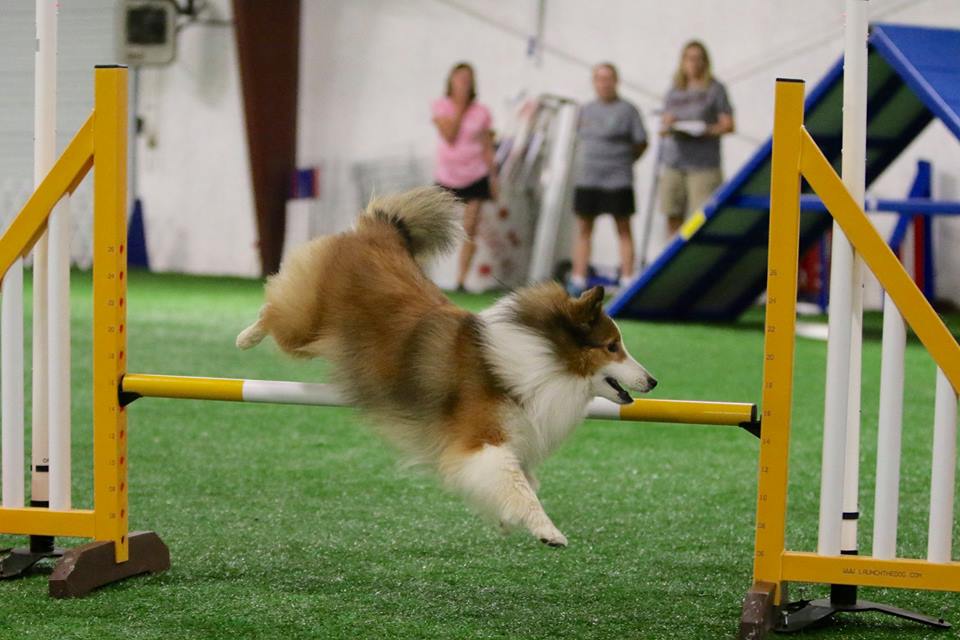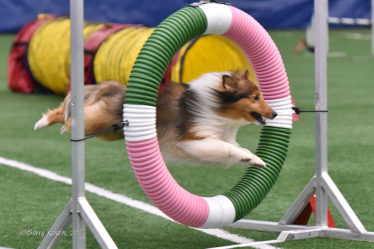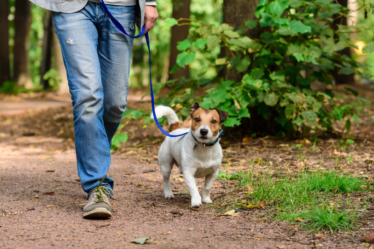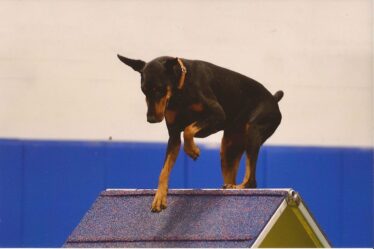
My goal for agility is to train to a competitive level while minimizing the number of injuries my dog sustains throughout their career. This year I retire my 10 year old, former world team dog and simultaneously have begun training my 18 month old in agility. Whimzy had a highly competitive career at 16” and never had a major injury. Competing a dog often over multiple years and staying healthy can be quite the challenge as agility is a high impact sport. Our dogs run hard and their bodies absorb a lot of impact on landing. By incorporating core workouts and cross-training, like hiking, we can increase our dog’s overall fitness and reduce their risk for injury. Handlers around the world have embraced the concept of additional fitness training for our canine athletes. But, this isn’t the only fitness concept we should be bringing into our agility training. What we train, how much we train and how often we train has a direct impact on our dog’s overall health and performance in agility. It is up to us, the handlers and trainers, to structure training sessions that positively benefit our dog’s health and subsequently improve our dog’s performance in agility. The following article outlines what I consider when planning for agility training and recovery.
Jumping qualifies as a plyometric movement; this means it relies on generating a large amount of force in a short period of time. Within the realm of agility, these plyometric movements (i.e. jumping and contacts) require landing from a height which places a large eccentric strain on the dog’s muscles. Eccentric contractions cause more damage to the muscle than concentric contractions. Absorbing a large amount of force repeatedly within a training session causes significant damage to the dog’s muscles; more so than running, turning or weaving. These activities require less force to be produced by the muscles than jumping, which allows for a quicker recovery period. Now, let’s be clear. Muscle damage is necessary to produce muscle growth. Muscle damage does not result in injury unless we do too much of a movement too often. To regulate the amount of damage to the dog’s muscle fibers caused by plyometric movements, I track the volume and frequency of plyometric movements throughout our training week.
When tracking volume for walking, we count miles. For plyometric we count the number of times the dog is required to land. For example, Flash, a novice dog, takes about 36 jumps per training session. When tracking volume we need to understand the minimum effective volumes and maximum recoverable volumes of a training session. In other words, a minimum number of jumps to stimulate a performance increase and a maximum number of jumps before overtraining occurs. The 36 jumps Flash does in practice meets the minimum amount of volume required as it closely represents the number of jumps Flash will see in competition. This stimulates a positive adaptation while not drastically exceeding the number of jumps required for competition that would result in overtraining. While 36 is not the magic number, we need to be intentional about how many jumps or repetitions over the contacts, particularly the teeter and a frame, our dog completes during training.
Not only do we want to be mindful of the volume of plyometric movements within a single training session, we need to consider how often we train these movements. Due to the high amount of muscle damage that is caused by training plyometric movements our dogs need an adequate amount of rest before we train again. When we train our dogs their performance eventually decreases throughout the training session, we see this when our dogs get fatigued, slow down or make more mistakes than usual. With time for recovery they can train at the same level before that initial performance decrease. For example, at a show your dog may have three runs throughout the day. With a few hours of rest in between runs your dog can run at the same speed and perform just as well in the last run as in the first run.
With time for recovery and time for adaptation, our dogs can train at a higher performance level than before. This is where we see technique, power and speed improve. To get these performance increases our dogs need longer than a few hours of recovery in between plyometric movements. Deciding how much recovery time is needed for your dog’s body to develop positive physical adaptations depends on how much volume, aka: how many jumps or contact repetitions, happened within the training session. For example, if Flash did 20 jumps – a low volume for what she is accustomed to and a low volume for what competition requires – a shorter recovery time, like 24 hours, would be appropriate. A larger training session, say 80 jumps or more, might require 36 hours up to multiple days for recovery. This depends on your dog’s fitness level, what volumes your dog is used to, and the purpose of your training session.
The volume and required recovery time help us determine how frequently we should train to best meet our dog’s physical needs. Training sessions with high jumping volume should be less frequent, while low jumping volume training sessions can happen more often. Training sessions without jumping or contacts, such as rewarding weave pole entries, flat work drills or other non-plyometric movements, can happen often due to the low recovery time required and can be used in between plyometric training sessions. Just as you tailor your training methods and handling style to meet your dog’s needs; how much and how often you train should be determined by what provides the best physical stimulus for your dog to stay healthy and perform better in agility.



